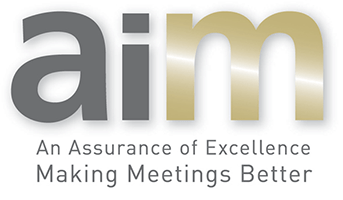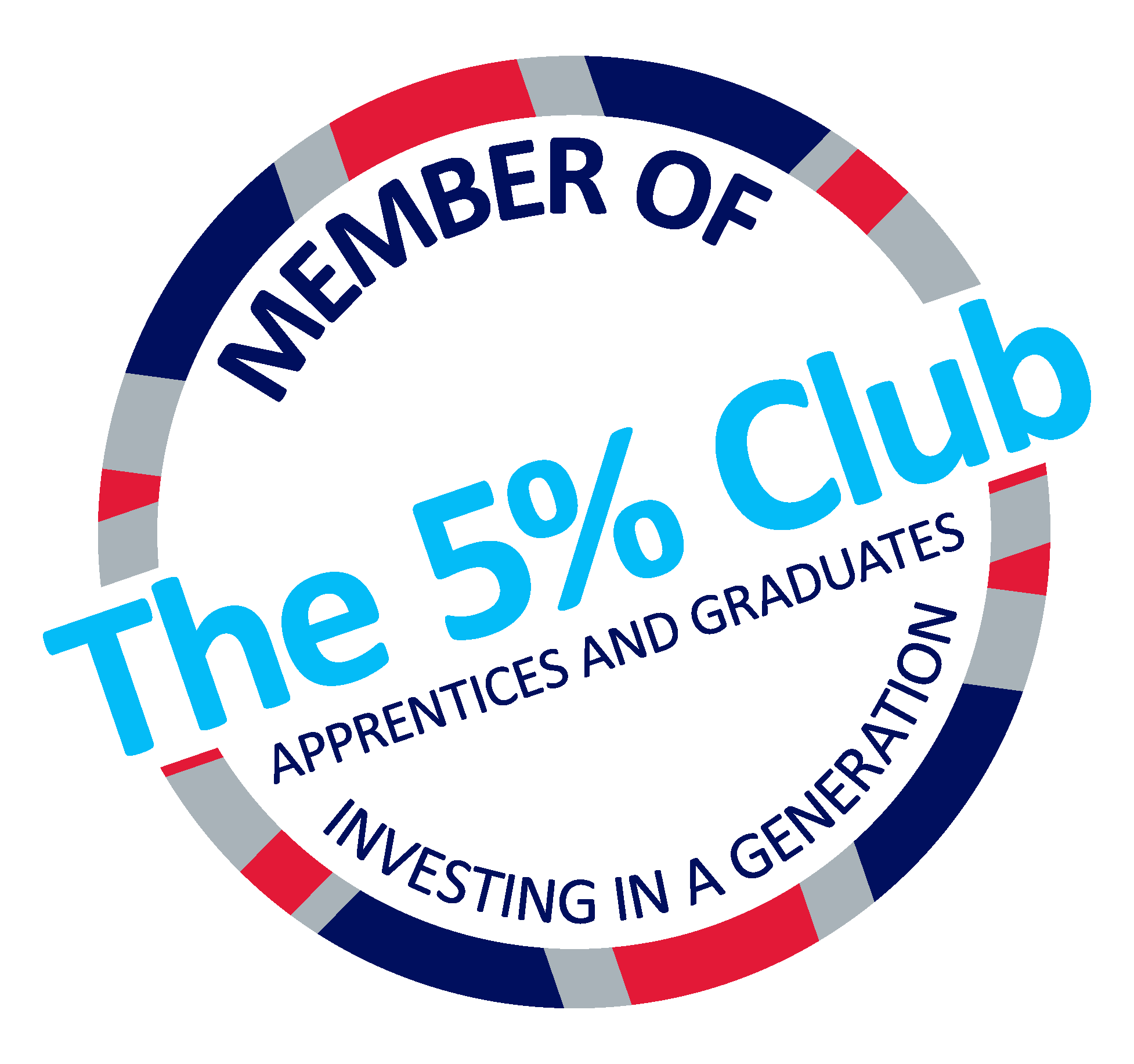Christmas Party Cringe: How to avoid those awkward interactions at your office Christmas Party.
As the annual ‘staff Christmas do” looms large, we will all be embracing the “season to be jolly”, right?
It’s the perfect opportunity to get to know your colleagues (and boss) a little better on a more personal level but, for some, it can be sheer torture - stuck in a crowded room full of people all shouting to make small talk.
You could be forgiven for wanting to avoid those awkward encounters completely but, here are our top ten tips from research we commissioned from Professor Liz Stokoe on How To Network:
1) Know where to place yourself
In networking spaces (or the ‘Social Room’), activities take place in 4 networking environments:
- Food/Drink queues
- Open space on the floor
- Standing tables
- Sitting tables
Consider the ‘time domain’ features (or “temporal features”) of the activities in the room. Open space activity is generally brief and temporary. The food/drinks queue is easy to join and exit and is relatively short-lived, whereas tables offer longer periods of time for conversation.
So, an effective way way to network is to to start a conversation in the food/drink queue and then move as a pair/cluster to a sitting table if the conversation is going well. If it’s not, it’s easy to exit the drinks queue and make your excuse to move on (see later).
2) Manage the "social room"
If you find starting or joining a conversation difficult, one way to solve this is to get to a standing table early with food or drink and wait for others to join you. By making sure your gaze is facing the room, others will be inclined to come over and join you as a cluster.
Conversely, if you do not want to talk to anyone, position yourself away from the tables and divert your gaze away from the room – a mobile phone comes in handy for this!
3) Use “transactional objects”
The social room is full of objects relevant to networking. Just as mobile phones are a good resource to avoid interraction, then other objects can be a signal to others that you’re ready to interact.
For example, we observed how solo delegates recruited others to join them by placing a drink on their standing table. The visibility of the glass/cup creates a transactional environment, which invites others to put their own drinks down and create a ‘cluster’ first and, if they start talking, an interactional circle.
We also observed that people used drinks/coffee cups as a resource to enter ongoing conversations – it’s much easier to enter a cluster of people with drinks if you also have a drink.
4) Join an "interactional circle"
To be effective at networking, you will need to join ongoing interactional circles, or in other words, join a conversation that is already happening. A simple conversation opener like “how are you?” won’t work in this setting.
To join the conversation, you first need to become part of the interactional circle. In the diagram below, trying to enter the circle between B and C will fail as you will be outside the direct visual field of all participants.
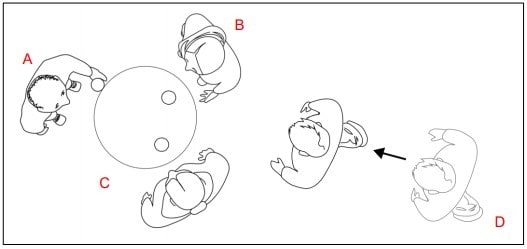
Make sure you position yourself so that all participants can see you in their direct field of vision. This will cause them to realign the interactional circle and create space for the new participant. In the diagram below, E secures mutual participatory access to all the other participants.
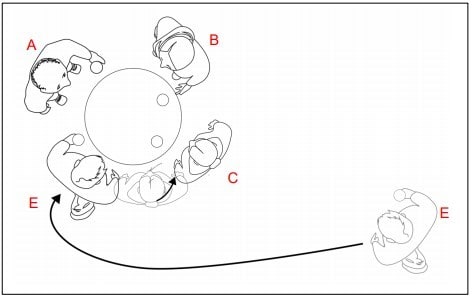
Bear in mind that interactional circles have an optimal size before ‘schisming’ in to further circles. The optimum size is 3-4 people in one circle, unless one member is a “star” (the boss for instance). In these circumstances, interactional circles can grow beyond the usual size, but participation is uneven.
5) Use your body posture to show “availability”
People display their availability to potential conversation partners through body posture. Participants may display to each other whether conversation is welcomed by how they position their bodies in relation to each other.
As you approach an interactional circle, if an existing participant only moves their head to face you, and not their whole body, it signals that the conversation will only be temporary. They are unlikely to accept you in to the circle and it’s time to move on. Likewise, if you actively want people to join your circle, turn your whole body to face them as they approach and realign the circle to welcome them in.
6) Follow the conversation before taking a turn
‘Following’ is a pre-cursor to speaking. Once you have joined an interactional circle physically, there are various ways you can begin to participate. An easy one is to nod and say “mmm” at the right moment. But what is the right moment?
Having positioned yourself correctly in an interactional circle, there are systematic points where a change of speaker – and your participation – is relevant. These are moments of ‘possible completion’, in which one speaker’s turn is grammatically complete (e.g. “is that yours?”; “the cake was gorgeous”), prosodically complete (the intonation falls to a ‘full stop’ pitch), and complete in terms of the action it is doing (e.g. a question; an assessment). When all these points come together, other speakers have an opportunity to participate. To network effectively, it is important to be able to follow, rather than expect to immediately take a turn in an ongoing interactional circle. This is because ‘following’ shows active participation and is necessary in any and all conversation.
7) Use “pre-sequences” to start a conversation
Sometimes, the best way to start a conversation is not to say ‘hello’ at all, but to use pre-sequences that create reciprocal transactional environments. For example, it’s easy to approach solo delegates with a question like “can I put my drink down here?”.
Pre-sequences allow us to silently assess someone’s potential enthusiasm to create an interactional circle.
In the diagram below, the woman who is looking for a transactional circle to join could approach the man with a question like “can I put my drink down here?”, initiating a circle but also inviting him to respond with his own pre-sequence – perhaps something like “yes of course, there aren’t many places to put drinks down are there?”.
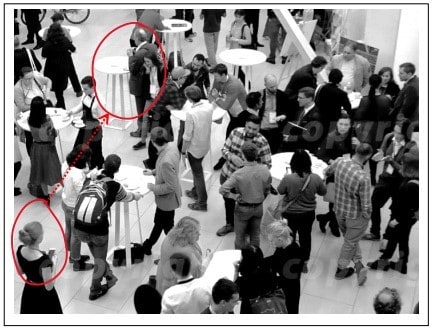
8) Don’t be a “first mover”
How you are judged by people is rarely by any psychological instruments or personality profiles they just so happen to whip out. So when we describe people as “kind”, “rude”, “obnoxious”, or “boring”, we are basing it on what people say or how they say it, to form our evidence base. That’s why it’s important to get networking encounters right – especially if your goal is future career opportunities!
Maybe what’s more useful is to look at things NOT to say.
In an example of a gathering of presenters/speakers following a presentation, an audience member approached the interactional circle. However, he did not follow any of the effective practices above – e.g. positioning himself for participatory access, following the conversation and spotting an opportunity to join. Instead, he directed a turn to one of the speakers and said, “you seemed nervous.”
We call this kind of opening remark a “first mover”. First moves are very difficult to follow and put the other person in a tricky interactional position. If the speaker had challenged his “inappropriateness”, it’s likely that he would have responded defensively – not a good basis for starting a conversation!
9) Don’t be a “mis-greeter”
Something else to avoid is to be a mis-greeter. A mis-greeter is a person who, while saying hello to you, looks over your shoulder to see if there is someone more important in the room. Mis-greeters say ‘hello’, but their gaze, body position, head position, and so on, tells you that they would prefer to be saying hello to someone other than you, or that they are inconvenienced in some way by talking to you.
Mis-greeters often turn out to be recalibrators. Recalibrators are people who decide that the person they mis-greeted is actually quite important and attempt to re-do their original greeting – a much trickier conversation to start second-time around!
10) Know that conversations are time-limited - and lie if you have to!
Networking situations are time-limited, and sometimes we might want to exit ‘early’ – while appearing to exit ‘on time’! Earlier, we noted four transactional environments in the social room – the food/drinks queue, open floor space, standing tables, and sitting tables. It is easy to enter and exit interactional circles in the queue, but progressively harder to enter and exit in the other environments. So don’t be too worried about having to pull the odd ‘porky’ to get out of a conversation!
The founder of conversation analysis, Harvey Sacks, famously wrote an article entitled, “Everyone has to lie”. Necessary dishonesty, or necessary lies, keep the wheels of sociality turning. Conversation analysts have shown that ending conversation takes some work and involves doing ‘pre-closings’. Pre-closings indicate to other speakers that you are planning to leave the interaction, and often contain future-orientated content such as “do you know where the toilets are?”, whether or not you need to use them!



